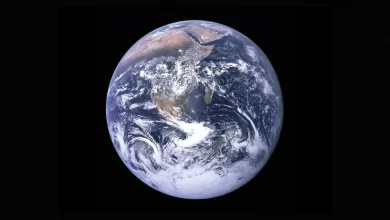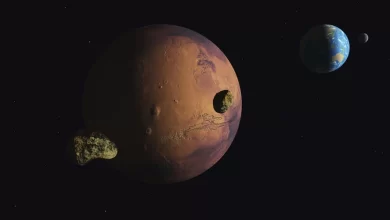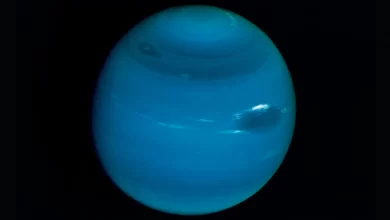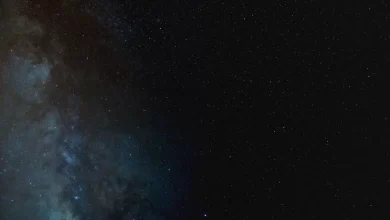A nebula is a cloud of gas and dust in space, and it is one of the most stunningly beautiful astronomical phenomena in the universe. Nebulae are often the birthplaces of new stars, and they can be found in many different shapes and sizes. Some nebulae are bright and colorful, with swirling patterns of gas and dust that seem to glow with their own light. Others are more subtle, with faint wisps of gas and dust that are barely visible against the darkness of space. Regardless of their appearance, all nebulae offer a glimpse into the vastness and complexity of the universe, reminding us of the incredible beauty and mystery that surrounds us. Some famous examples of nebulae include the Orion Nebula, the Cat’s Eye Nebula, and the Helix Nebula, each of which has its own unique characteristics and features. Whether viewed through a telescope or admired in photographs, nebulae are a powerful reminder of the wonders of the universe and the vastness of our cosmic home.
- The word “nebula” comes from the Latin word for “cloud,” reflecting the cloud-like appearance of these celestial objects.
- Nebulae come in many shapes and sizes, including spherical, elliptical, and irregular. Nebulae are made up of gas and dust, primarily hydrogen and helium, along with small amounts of heavier elements.
- Nebulae are often studied by astronomers using a variety of telescopes and instruments, including radio telescopes, X-ray telescopes, and spectrographs, to learn more about their composition, structure, and evolution.
- The dust and gases in a nebula are widely dispersed, but gravity can gradually pull clumps of dust and gas together. As these clumps grow in size, their gravity grows stronger and stronger.
- Some nebulae are the birthplaces of new stars, as the gas and dust within them begin to collapse under the force of gravity and form new protostars.
- The colors of a nebula depend on the composition of the gas and dust within it, as well as the temperature and density of the material present in it.
- The Orion Nebula, one of the most well-known nebulae, is located in the constellation Orion and is visible to the naked eye on clear nights.
- The Crab Nebula, another famous nebula, is the remnant of a supernova that was first observed in 1054 AD. It was first identified as a nebula by British astronomer William Parsons in 1844.
- The Horsehead Nebula, located in the constellation Orion, is famous for its distinctive shape that resembles a horse’s head.
- The Horsehead Nebula is actually a dark nebula, meaning it is made up of dust that blocks the light of stars behind it.
- Some nebulae are illuminated by nearby stars, which cause the gas and dust to glow with a variety of colors.
- Some nebulae, such as the Cat’s Eye Nebula and the Ring Nebula, have been extensively studied by astronomers due to their relatively simple shapes and structures.
- The Cat’s Eye Nebula, located in the constellation Draco, is one of the most complex and intricate nebulae known to astronomers, with a structure that includes multiple shells and filaments of gases and dust.
- Some nebulae, such as the Eagle Nebula, are so large that they can be seen with binoculars or small telescopes. The Nebula was discovered in 1745 by the Swiss astronomer Jean-Philippe Loys de Chéseaux and is located 7,000 lightyears from Earth.
- The Veil Nebula, located in the constellation Cygnus, is the remnant of a supernova that occurred around 8,000 years ago. It is at a distance of 1,470 light years.
- The Ring Nebula, located in the constellation Lyra, is a planetary nebula, which is a type of Nebula that forms around a dying star. It is 2,283 lightyears far from our green planet.
- The Rosette Nebula, located in the constellation Monoceros, is a large, circular nebula that is illuminated by a cluster of young, hot stars at its center. The Nebula’s diameter exceeds 100 lightyears, and its total mass is estimated to be around 10,000 solar masses. An English astronomer named John Flamsteed discovered this remarkable object around 1690.
- The Helix Nebula, located in the constellation Aquarius, is a planetary nebula that has a distinctive “eye-like” shape. Its size is 2.87 lightyears and 694.7 lightyears away from the Earth.
- Some nebulae, such as the Lagoon Nebula, it is a bustling stellar nursery, a region in space’s gas and material where stars are born. It is located in the dense starfields of Sagittarius, 5,000 lightyears from Earth, and close to the galactic core of our Milky Way galaxy.
- The Carina Nebula, located in the southern sky, is one of the largest and most complex nebulae known to astronomers. Its other name is NGC 3372, and it contains several massive bright stars, including dozen that are 50 to 100 times the mass of the sun.
- The Heart and Soul Nebulae, located in the constellation Cassiopeia, are a pair of large, bright nebulae that are often photographed together. The other name of the nebulae is IC 1805, and it is 7500 light years away from Earth.
- The Trifid Nebula, located in the constellation Sagittarius, is named for its three distinct regions of gas and dust. It was discovered in 1764 by Charles Messie and is around 9000 lightyears away.
- Nebulae are not just beautiful objects to look at, but they also provide valuable clues to the processes of star formation and the evolution of galaxies.
- The Pillars of Creation, located in the Eagle Nebula, are a famous feature that the Hubble Space Telescope photographed. These towering columns of gas and dust are prime examples of complex structures that can be found within nebulae.
- Some nebulae, such as the Cone Nebula, have shapes that are sculpted by strong winds and radiation from nearby stars. It is located in the Orion Arm of our Milky Way galaxy and is 2700 light years away.
- The Boomerang Nebula, located in the constellation Centaurus, is the coldest known object in the universe, with a temperature of just one degree Kelvin (-458 degrees Fahrenheit). It is cataloged as LEDA 3074547 and is located 5000 light years away from our blue-green planet.
- The Iris Nebula, located in the constellation Cepheus, is named for its distinctive shape, which resembles the iris of an eye. It appears blue in color as they are composed of microscopic solid matter particles, up to 10 or even 100 times smaller than dust particles on Earth. It is 5500 years old and is 3.5 lightyears in radius.
- The Witch Head Nebula, located in the constellation Orion, is a faint nebula illuminated by nearby stars’ light. The outline of the cloud resembles the face of a grinning witch.
- The Blue Snowball Nebula, or NGC 7662, located in the constellation Andromeda, is a planetary nebula that has a round, blue appearance.
- The Rho Ophiuchi Nebula, located near the star Rho Ophiuchi in the constellation Ophiuchus, is a colorful and complex nebula that is home to many young stars. It is 460 light years away from us and is one of the closest star-forming regions to the Solar System.
- The Flame Nebula, located in the constellation Orion, is a bright and colorful nebula that is illuminated by the light of nearby stars. The other name of it is NGC 2024, and it is around 900 to 1500 lightyears away from our planet.
- The Eskimo Nebula, located in the constellation Gemini, is a planetary nebula that has a distinctive “face-like” appearance. It is also denoted by NGC 2392 and is just 0.34 lightyears in radius. The Earth is around 5,000 lightyears away from this thing.
- The Tarantula Nebula, located in the Large Magellanic Cloud, is one of the largest and most active star-forming regions in the nearby universe. It has a radius of 931 lightyears and is a whopping 159,800 lightyears away from us.
- The Omega Nebula, located in the constellation Sagittarius, is a large and bright nebula that contains many hot, young stars. It is one million years old and is 11 lightyears in radius.
- The Cocoon Nebula, located in the constellation Cygnus, is a star-forming region that is surrounded by a cocoon of gas and dust. It is 3,262 lightyears away from us.
- The California Nebula, located in the constellation Perseus, is a large, bright nebula that is often photographed due to its distinctive shape. It is 1000 light years away from our world.
- The Veil Nebula is actually a complex of several different nebulae, including the Western Veil, the Eastern Veil, and Pickering’s Triangle. It is 50 light years in radius and is 1,470 light years away.
- The Veil Nebula is expanding at a rate of about 500,000 miles per hour.
- Some nebulae, such as the North America Nebula, have shapes that resemble familiar objects here on Earth.






